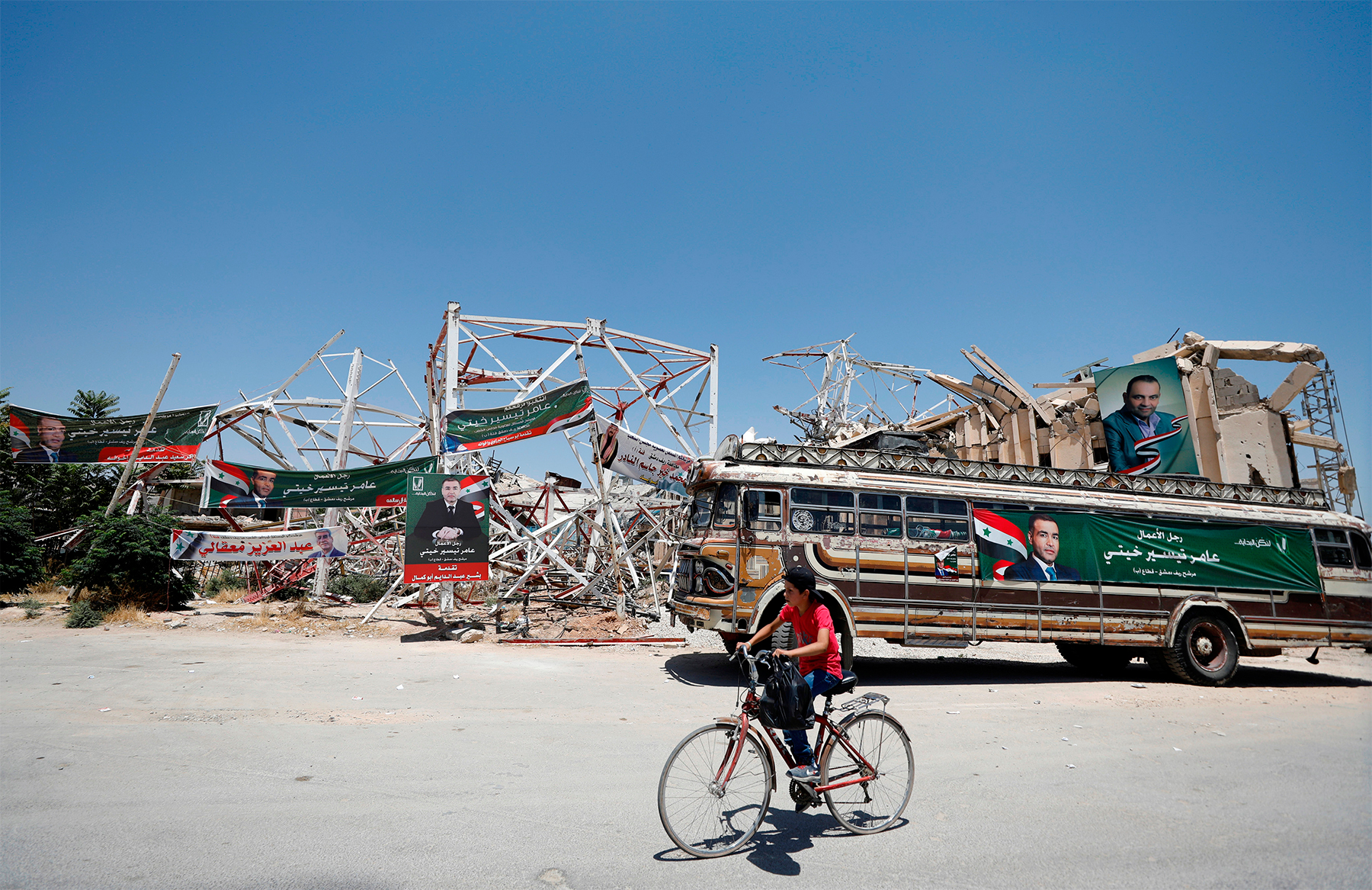Development Aid: What If We Need to Re-Think the Concept?
(votes: 3, rating: 5) |
(3 votes) |
RIAC Intern
Most commentary and research assume that it is the responsibility of the ‘rich’ to develop the ‘poor’, especially when commenting—in good faith—inequalities in inflows and outflows between rich and poor countries. When was the last time we heard anything positive from the least-developed countries? Although development assistance is tailored to each ecosystem, there is a clear focus on disability rather than capacity, which encourages migration. This approach is contradictory with the idea that each state is sovereign and responsible. Thus, there is an urgent need to defend local capacities and encourage the localism of human capital.
The issue of national responsibility must be taken into consideration. However, some elites obviously have no interest in encouraging this view when they are not themselves responsible. In this case, cooperation with the private sector and civil societies is to be preferred.
Finally, it looks like ODA is a way to slight the transformation of world order that demographic dynamics announce nowadays. A way to prepare the next page is to harmonise cultures and prospects of future powers to better bargaining. This bargaining, for former colonial powers, is mainly concentrated around former colonies, as shown by the correlation between ODA volume and former colonies.
While this is where donors find the most accessible added value, it is also a signal of weakness and limitation of ODA, that remains geographically in the channels of influence of each donor country. For instance, priority countries of the French ODA include Senegal, Ethiopia, Mali and Burkina Faso. Three of these are former French colonies. In its form, ODA is a useful official means of smoothing out future competition between emerging states and dominant states. In substance, it reflects unfavourable trends.
The following recommendations can be addressed to policy-makers and development aid agencies:
1. Accept the accessibility of development through other ways than the national experience.
2. Acknowledge the cultural or community bias that affects the success of projects, and integrate it into the assistance strategy, not taking it as a risk but rather seeing where it can be leveraged.
3. Be very careful about aid that risks dividing competing communities whose common enemy is potentially the donor country. The ultimate risk is to open up opportunities for hostile rapprochement against the donor country accused of excessive profit and interference.
4. Prioritise the private sector and its metamorphic character to play on interdependence.
5. Use public-private partnerships to interweave strategic projects with economic realism.
6. Use transactional analysis (psychology-based) to put assistance to developing countries and post-colonial treatment into perspective. The damage caused by asymmetries of intent will be alleviated.
The COVID-19 crisis has increased the feeling of interdependence across the world. Taken together with climate issues raised by the global community at the COP26, the notion of “community of destiny” is supposed to have never been so intense.
However, at the time of calls for collective responsibility and solidarity, the distribution of vaccines has showed crucial inequalities, which questions the philanthropy of states. A failure according to a constructivist approach or an unsurprising scenario for realists.
Looking at this situation through an academic lens leads us to the concept of official development assistance (ODA). This somehow refers to the idea of “state philanthropy”, which is, of course, and without being naïve, not detached from each state’s global influence policy. Assistance is not free, either for donors or for recipients.
The concept originally comes from the Marshall Plan’s idea to re-build Europe in the wake of World War II. It has afterwards continued towards the poorest countries in the world.
Western approach to development
Western nations, represented by the OECD in the field of development assistance, assume a human rights-based approach to development. Primarily, economic development increases social mobilisation, which will then favour democratisation and human rights promotion. This systematic way of thinking development represents how most people in Western countries understand the ultimate aim and sense of development assistance. Therefore, the relationship with repudiated regimes focuses on aid rather than constructive and natural trade based on shared values. Therefore, it actually doesn’t prevent ODA to be spent in the poorest countries, also called “fragile” and sometimes “rogue” states, because of their institutional instability.
However, the development of democracy and the promotion of human rights through economic development is challenged by other development approaches. Nowadays, there are so-called “autocratic” regimes that have great conditions for sustainable economic development and growth of power in the world order. Examples include China or Singapore. Conceptually, we cannot extrapolate these cases by a special affiliation to “Asia”. They are contemporary testimonies that nuance modern theories of economic development through democratisation, which should then promote human rights as the modern Western history is presented.
Institutional capacity is one of the other approaches to development. A country must have strong and well-designed institutions to contain sustainable economic development. This capacity includes the effectiveness of decision making, accountability and the competence of institutions to lead the group.
Yet, the third approach views development through competition and bargaining between elites. Elites must reconcile to enable the group to develop as a whole. This raises the question of development in countries weakened by multi-ethnic conflicts.
These dynamics of development are parallel to the other four main theories whose angle is different: modernisation, dependency, world-systems, and globalisation. In every case, they are simply corresponding to the manner how development is heard in Western societies. Thus, foreign aid policies assume that development corresponds to the above-mentioned theories, which does not mean that it is suitable for all cultures or regions of the world, as some part of the research has pointed out. However, what if, when designing foreign aid policies, development was considered a subjective and biased notion?
Comprehensive approach: assistance shall first assume that development is not a fixed concept
Assistance as understood by the OECD must take into account other development models. However, the current problem is that the measurement grid considers criteria of social, human and cultural norms that are additional to the measurement of material development only. These additional criteria are seen as complementing the material approach. These include, for example, inclusive finance, gender equality or other struggles that some aid recipient countries are not particularly ready or willing to experience.
However, in this model, the relationship between the project parties and the beneficiary is fragile when the values promoted are not shared. The continuity of investments is therefore very limited. Rhetorically, this does not mean that a state needs to extend its values to be successful. This is often the mistake, as values-based businesses can be disrupted by regime changes, the cost of which can become enormous. Therefore, taking into account political alternations and the personalization of foreign relations by each government: an appropriate positioning on a long-term perspective must be based on humility beyond national borders. This assumption in international politics is equivalent to a wait-and-see attitude and pragmatic observation on development issues.
Nowadays, Chinese model vs. Western one
China invests massively in long-term projects, using debt as a leverage for long-term accountability and project-monitoring. Additionally, the Chinese development assistance doctrine insists on a few principles, including the unconditionality of its aid, particularly the influence over the rules. A decade ago, this approach was perceived as a “silent revolution” and it’s become of public notoriety nowadays. The Chinese pledge to contribute to an investment and trade relationship, as opposed to assistance in dealing with injustice. However, of course, when debt repayment becomes difficult, it can become a tool to take control of the strategic sector, a tool used by China, as we have already seen with the Hambantota International Port in Sri Lanka. There may be a gradual material takeover, but China does not directly interfere with values and rules, whereas these should be changed according to Western OECD-based communication. This differentiation of the Chinese approach is a mark of confidence for the counterpart.
In terms of global positioning, China is clear. None of its white papers speak of allies, but partners. Quoting one of them: “history shows that the pursuit of hegemony, alliance and confrontation and the abuse of power in international relations will induce chaos or even war.”
Metaphorical comparison with giving coins to a tramp
Most of us are marked every time we see a beggar on the street. When we give, it is either because our heart calls us to do so in a powerful and free-way, or because we trust the beggar's ability to use the money.
When we don't give, it is somehow a sign of a lack of desperation in the ability to use a gift well (or simply of greed, of course), and we don't try - or manage - to understand the functioning of the person in front of us.
The situation that often arises is conditional giving, with the argument that we want to be sure that our coin will be used in a virtuous way. For example, by saying: "You won't buy alcohol with it, promise? Taking the coin anyway, he may answer "yes, I'll do some good" to put on a brave face, but in almost all cases he will be upset by this remark. And it is likely that he will ingest this frustration by thwarting the donor's intended use of the coin.
In this case, the bad outcome is mainly based on the hypocrisy of the donor who in fact does not give unconditionally, which then generates the frustration of the receiver and his irresponsibility.
The method used by development aid can have some of the same effects. Even if states considered 'rogue' are enthusiastically helped by activist countries, the feeling that the other wants to change the rules can have the counterproductive effect of rejecting them.
On the other side, Western countries work through an alliance-based model that is reflected in its development assistance policy, whose effects may be questioned.
Conversely, for private sector actors in countries in political conflict, there is often a kind of ‘reward’ for trust, proportional to the risk taken. The case of Total in Russia is a good example. Its projects show very high rates of return. Another broader picture that should be considered is the Belt and Road Initiative, whose development, based on investment rather than aid, is an example (see The Belt and Road Initiative: Towards a New World Order).
The ambiguity of foreign aid: an alternative way of influencing states with non-shared values and without a sustainable institutional relay
Continuing with the ambiguity of foreign aid, its material and reputational returns lead to a rethinking of the coherence between the official intention and the predictable effects. The question “Are we really helping others or just ourselves?” is central.
The promotion of foreign aid is often based on what each nation is and thinks it is. The OECD's current approach is mainly to seek a global mirror of Western values, ideals and principles. In this logic, when they cannot be found, an aid relationship is established. However, this approach is analogous to the metaphor of giving a coin to a tramp, and poor countries are not tramps.
International interventionism often risks an infantilizing logic
Most commentary and research assume that it is the responsibility of the ‘rich’ to develop the ‘poor’, especially when commenting—in good faith—inequalities in inflows and outflows between rich and poor countries. When was the last time we heard anything positive from the least-developed countries? Although development assistance is tailored to each ecosystem, there is a clear focus on disability rather than capacity, which encourages migration. This approach is contradictory with the idea that each state is sovereign and responsible. Thus, there is an urgent need to defend local capacities and encourage the localism of human capital.
The issue of national responsibility must be taken into consideration. However, some elites obviously have no interest in encouraging this view when they are not themselves responsible. In this case, cooperation with the private sector and civil societies is to be preferred.
Hypothesis: development aid to pre-empt an unfavourable position vis-à-vis developing countries
Finally, it looks like ODA is a way to slight the transformation of world order that demographic dynamics announce nowadays. A way to prepare the next page is to harmonise cultures and prospects of future powers to better bargaining. This bargaining, for former colonial powers, is mainly concentrated around former colonies, as shown by the correlation between ODA volume and former colonies (for instance, see the map of ODA flows to the Arab Middle East and North Africa or Development Assistance As Leverage for Russia’s Footprint in Kyrgyzstan and Tajikistan).
While this is where donors find the most accessible added value, it is also a signal of weakness and limitation of ODA, that remains geographically in the channels of influence of each donor country. For instance, priority countries of the French ODA include Senegal, Ethiopia, Mali and Burkina Faso. Three of these are former French colonies. In its form, ODA is a useful official means of smoothing out future competition between emerging states and dominant states. In substance, it reflects unfavourable trends.
Key values needed in foreign aid policies: humility, prudence and resilience
The following recommendations can be addressed to policy-makers and development aid agencies:
1. Accept the accessibility of development through other ways than the national experience.
2. Acknowledge the cultural or community bias that affects the success of projects, and integrate it into the assistance strategy, not taking it as a risk but rather seeing where it can be leveraged.
3. Be very careful about aid that risks dividing competing communities whose common enemy is potentially the donor country. The ultimate risk is to open up opportunities for hostile rapprochement against the donor country accused of excessive profit and interference.
4. Prioritise the private sector and its metamorphic character to play on interdependence.
5. Use public-private partnerships to interweave strategic projects with economic realism.
6. Use transactional analysis (psychology-based) to put assistance to developing countries and post-colonial treatment into perspective. The damage caused by asymmetries of intent will be alleviated.
(votes: 3, rating: 5) |
(3 votes) |







